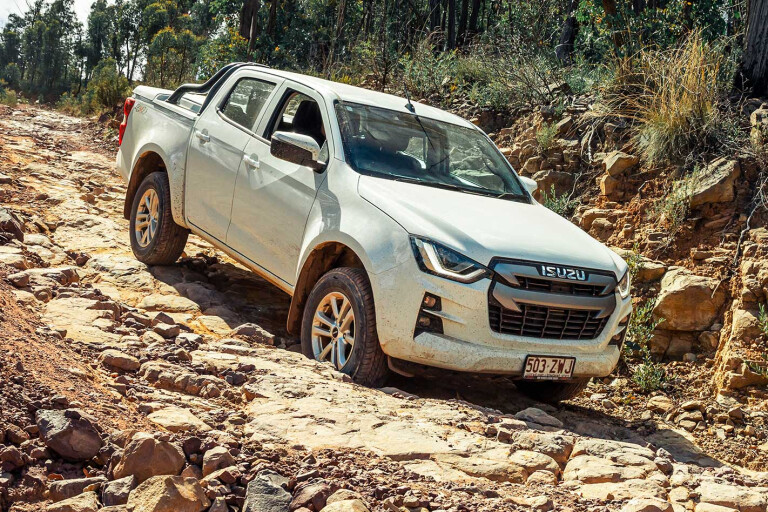
ISUZU delivered an all-new D-MAX one-tonne ute early in 2020 and it is a huge step up from the previous generation.
4X4OTY CONTENDERS
MAZDA BT-50 XTR
TOYOTA HILUX SR5+
JEEP GLADIATOR RUBICON
LAND ROVER DEFENDER
With a new chassis, suspension design, vastly upgraded engine, class-leading safety equipment, new exterior and interior; this is the ute that Isuzu Ute Australia (IUA) hopes will take the fight to the crowd favourites Toyota Hilux and Ford Ranger.
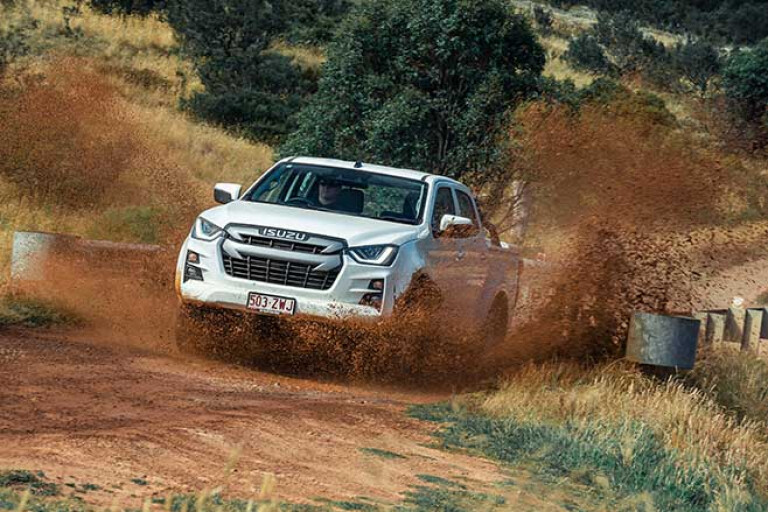
IUA supplied us with a $55,970 LS-M specification D-MAX for 4x4OTY testing, the second up from four specification grades. The LS-M is a model which we find particularly appealing as it comes with all the mechanical upgrades and new hardware, but you’re not paying for bling or add-ons you don’t really need.
2021 4X4OTY: The route
This vehicle is fitted with the optional tub liner, satin black sports bar, hard tonneau, tow bar, 12-pin plug and electronic brake controller, bringing the drive-away price up to $64,574.
POWERTRAIN & PERFORMANCE
ISUZU’S venerable 4JJ 3.0-litre diesel engine has always been a strong selling point for its cars in Australia.
It might be getting on in years and unable to match the latest engines in outright performance but it has a great reputation for durability and fuel economy and, in this age of diminishing engine capacities, the 3.0-litre is considered one of the larger engines in this class of car.
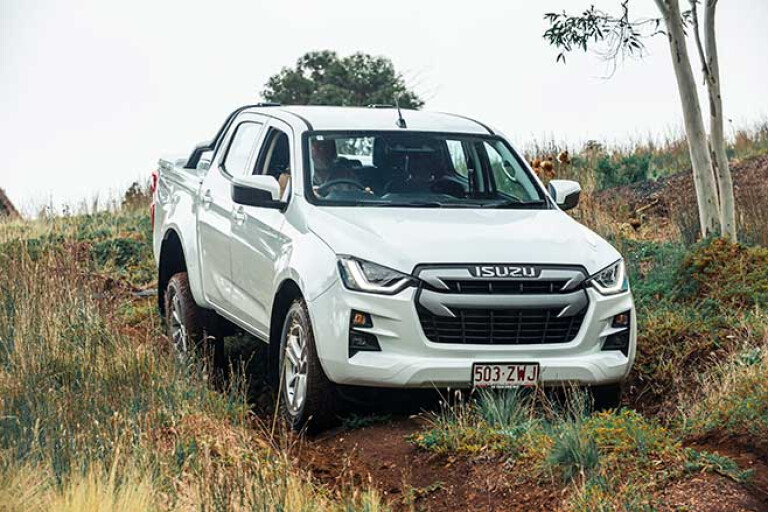
Isuzu gave the mill a thorough working over for this latest generation of the 4JJ, called the 4JJ3-TCX, with a new cylinder head, engine block, turbocharger, fuel injection system and a raft of upgrades that really make it all-new.
These changes up the power and torque to 140kW and 450Nm respectively, which, while still short of the 500Nm some of its competitors are claiming, helps get the now heavier new D-MAX along. It’s also slightly more refined with less of that four-cylinder NVH reaching the cabin.
ON-ROAD RIDE & HANDLING
THE suspension changes made to the 2020 D-MAX totally revise the front-end design for a more-planted and direct feeling on road. As a result, it steers and handles much better than the old model.
The rear end retains a unique three-leaf spring pack which is firm and jittery in the unladen ute, but expected of a vehicle designed to carry a tonne or 3.5-tonne in tow. The LS-M gets a heavier-duty rear spring pack than the two upper-spec models.
2021 4X4OTY: And the winner is...
The new interior in the D-MAX makes it a much nicer place to be for long hours behind the wheel, especially the new front seats. It’s better at isolating road and wind NVH, gives more relaxed touring and the standard equipment is well-appreciated. Some might feel the LS-M with its vinyl floor coverings, manual air-conditioning and small AV screen are a bit too working-class, but there are always the better equipped LS-U and X-Terrain variants for those folks.
OFF-ROAD
THOSE chassis and suspension changes also work well to improve the off-road performance of the D-MAX, notably a bit more wheel travel at the rear, but still not a lot. More significant is the inclusion of a rear differential lock (RDL) as standard across the 4x4 D-MAX range, something not offered in the past.
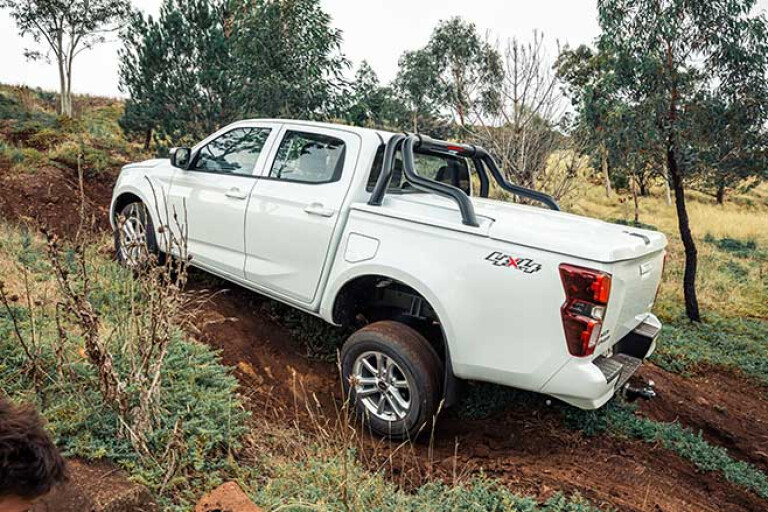
The Isuzu needed that diff lock on our rutted set-piece hill climb which has deep holes placed in the wheel tracks designed to test tractive ability. The standard electronic traction control (ETC) struggled to keep the D-MAX moving once the front wheels lifted as it’s slow to react, but enabling the RDL got it there without too much trouble; although it disables the ETC.
CABIN & ACCOMMODATION
AS mentioned, the interior of the D-MAX is all-new and a big improvement over the previous model. The level of standard equipment is up and the front seats are more supportive, while the rear seats are best for two adults or three kids at best.
While the LS-M model as tested does feel very sparse and workmanlike, the upper-spec models are not so. Notable here is that the LS-M has an old-school key that you have to put in the ignition barrel and turn to start the car, while the LS-U and X-Terrain models have keyless entry and push-button starting.
The D-MAX boasts one of the most extensive lists of safety equipment in this class of ute and it is standard across all models. Most of them go unnoticed but we do like the rear cross-traffic alert setup. Lane keeping correction and self-steering is intrusive at times and when you least expect it, so it pays to be ready for it.
Also intrusive is the number of chimes and bells the D-MAX has, not just from the driver’s aids but even things like unlocking the doors. It double-beeps when you unlock the doors to put something in the passenger side or rear seat, double-beeps again as it self locks while you walk around to the driver’s door, requiring you to unlock it again with more beeps. It all becomes more than a bit annoying for you and your neighbours.
Another annoyance is the lack of volume dials on the sound system and only slow-responding small buttons for adjustments.
PRACTICALITIES
WITH its wipe-out vinyl floors and 17-inch alloy wheels, the LS-M is more practical than some of the upper-spec D-MAX variants, with upwards of a one-tonne payload, 3500kg towing capacity, a deep, long tub with tie downs (no 12-volt outlet) and 800mm wading depth.
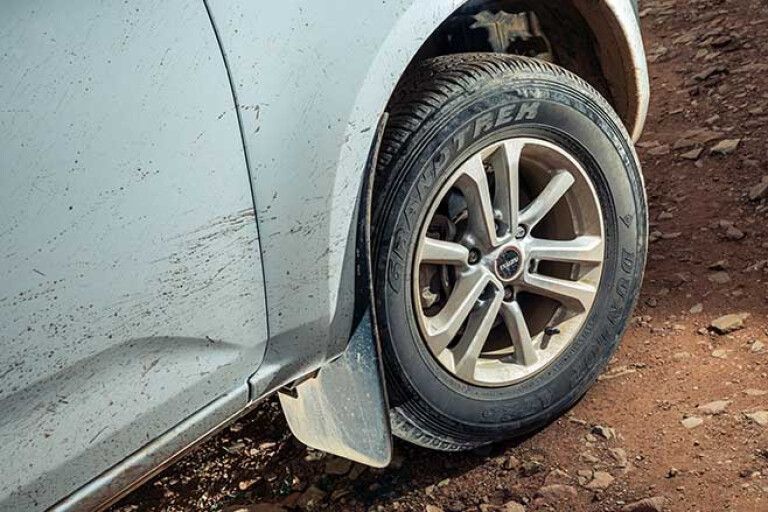
It is a working-class model but doesn’t miss out on any essentials, which is what we’re looking for in a 4x4 ute.
SPECS
ENGINE: 3.0-litre 4-cyl turbo diesel
MAX POWER: 140kW at 3600rpm
MAX TORQUE:450Nm at 1600 to 2600rpm
TRANSMISSION: Six-speed automatic
4X4 SYSTEM: Dual-range part-time
CRAWL RATIO: 33.3:1
CONSTRUCTION: Separate-chassis
FRONT SUSPENSION: Independent/coil springs
REAR SUSPENSION: Live axle/leaf springs
WHEEL/TYRE: 265/60R18 110S
KERB WEIGHT: 2131kg
GVM: 3100kg
PAYLOAD: 970kg
TOWING CAPACITY: 3500kg
TOWBALL DOWNLOAD: 350kg (max)
GCM: 5950kg
FUEL TANK CAPACITY: 76L
ADR FUEL CLAIM: 8.0L/100km
TEST FUEL USE: 11.2L/100km
GROUND CLEARANCE (CLAIMED): 240mm
APPROACH ANGLE: 30.5⁰
RAMPOVER ANGLE: 22.7⁰
DEPARTURE ANGLE: 23.8⁰
WADING DEPTH: 800mm

COMMENTS